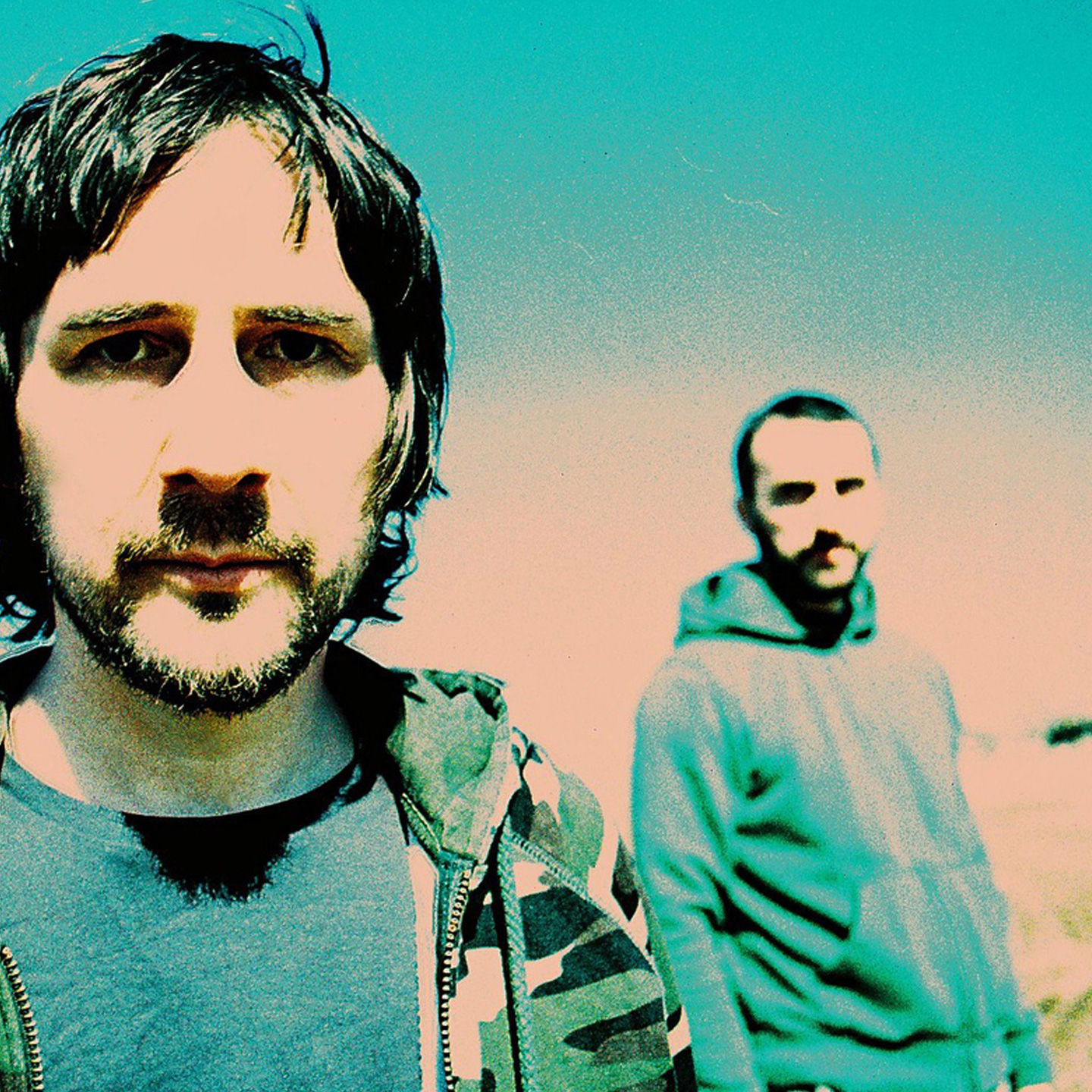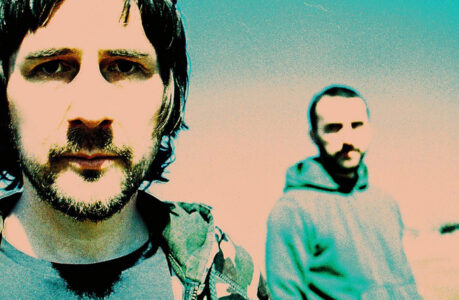Boards of Canada
Boards of Canada, a duo hailing from Scotland, has carved a niche in the electronic music scene, mesmerizing listeners with their ethereal compositions. Delving into their history, unique sound, key personnel, essential albums and tracks, legacy, significant reviews, and similar bands, this essay unveils the enigmatic allure of Boards of Canada.
History and Development
Boards of Canada’s history is steeped in the lush landscapes and quiet mystique of their Scottish upbringing. Michael Sandison and Marcus Eoin, brothers by blood and collaborators by passion, found their musical genesis in the remote reaches of Aberdeenshire. Surrounded by the evocative beauty of nature and the serenity of isolation, they embarked on a journey of sonic exploration that would redefine the boundaries of electronic music.
In the late 1980s, armed with a modest array of synthesizers, samplers, and tape machines, the duo began crafting intricate soundscapes in their makeshift studio. Influenced by the warm, analog tones of vintage equipment and the timeless melodies of childhood nostalgia, they forged a sound that was as enigmatic as it was captivating. Drawing inspiration from sources as diverse as science fiction literature, 1970s educational programs, and the hidden mysteries of nature, Boards of Canada carved out a sonic identity that defied conventional categorization.
Their early experiments culminated in the release of their debut album, “Twoism,” in 1995, a limited-edition cassette that showcased the duo’s burgeoning talent for crafting ethereal soundscapes. Buoyed by the underground success of their debut, Boards of Canada continued to refine their sound, honing their craft with each subsequent release.
Type of Music
Boards of Canada’s music defies easy classification, transcending the boundaries of traditional electronic genres to create a sound that is uniquely their own. At its core, their music is characterized by a delicate balance of analog warmth and digital precision, blending hypnotic rhythms with evocative melodies to create immersive sonic landscapes.
One of the defining features of Boards of Canada’s music is its pervasive sense of nostalgia. Through the use of lo-fi production techniques, warped samples, and haunting melodies, the duo evokes a profound sense of longing for a bygone era—a time before the relentless march of progress, when the world was filled with wonder and possibility.
Yet, for all its nostalgic undertones, Boards of Canada’s music is also undeniably forward-thinking. Through their innovative use of technology and their willingness to push the boundaries of sonic experimentation, they have created a sound that is at once timeless and futuristic. From the dreamy, downtempo beats of “Music Has the Right to Children” to the dark, brooding atmospherics of “Geogaddi,” each album in their discography offers a glimpse into a world that is at once familiar and alien.
In essence, Boards of Canada’s music is an exploration of the liminal spaces between memory and reality, nostalgia and futurism. It is music that invites listeners to lose themselves in its hypnotic rhythms and ethereal textures, to journey to distant realms of the imagination where anything is possible. And in a world that is increasingly defined by chaos and uncertainty, perhaps that is the greatest gift of all.
Influences and Inspirations
Boards of Canada’s sonic tapestries are woven from a rich tapestry of influences and inspirations, ranging from the natural world to the realms of science fiction and beyond. Drawing from a diverse array of sources, the duo crafts music that is as evocative as it is enigmatic, inviting listeners on a journey through the hidden recesses of the mind.
Nature
At the heart of Boards of Canada’s music lies a deep reverence for the natural world. Growing up in the rugged landscapes of Scotland, Michael Sandison and Marcus Eoin developed a profound connection to the land and its mysteries. From the whispering winds of the highlands to the gentle rustle of leaves in the forest, the duo found inspiration in the beauty and tranquility of nature.
This reverence for the natural world is reflected in their music, which often features field recordings of birdsong, flowing water, and other organic sounds. By blending these elemental textures with their own synthesized melodies, Boards of Canada creates a sonic landscape that is at once familiar and otherworldly, inviting listeners to immerse themselves in the sights and sounds of the wilderness.
Science Fiction
In addition to the natural world, Boards of Canada draws inspiration from the realms of science fiction and speculative fiction. Fascinated by the limitless possibilities of the imagination, the duo explores themes of space travel, artificial intelligence, and alternate realities in their music.
This fascination with science fiction is evident in their use of vintage synthesizers and retro-futuristic soundscapes, which evoke the mood of classic sci-fi films and literature. Tracks like “1969” and “Telephasic Workshop” transport listeners to distant galaxies and uncharted worlds, where the boundaries of reality are blurred and anything is possible.
Childhood Nostalgia
Perhaps the most pervasive influence on Boards of Canada’s music is their own childhood nostalgia. Growing up in the 1970s and 1980s, the duo was surrounded by the pop culture of the era, from Saturday morning cartoons to arcade games and beyond. These formative experiences left an indelible mark on their music, imbuing it with a sense of innocence and wonder that is uniquely their own.
Through the use of vintage synthesizers, distorted samples, and lo-fi production techniques, Boards of Canada evokes the halcyon days of youth, when the world was filled with magic and possibility. Tracks like “Roygbiv” and “Aquarius” are suffused with a sense of longing for a simpler time, when life was lived at a slower pace and the future was filled with endless promise.
In essence, Boards of Canada’s music is a reflection of the myriad influences and inspirations that have shaped their lives and their art. From the natural world to the realms of science fiction and childhood nostalgia, each element comes together to create a sound that is at once familiar and alien, inviting listeners on a journey through the hidden recesses of the mind.
Key Personnel
Michael Sandison and Marcus Eoin form the creative nucleus of Boards of Canada. With a shared passion for experimentation, they collaborate seamlessly to craft sonic tapestries that resonate with audiences worldwide. Their meticulous attention to detail and visionary approach have solidified their status as pioneers in the electronic music landscape.
Essential Albums
- Music Has the Right to Children: Released in 1998, this seminal album is revered for its groundbreaking soundscapes and haunting melodies. Tracks like “Roygbiv” and “Aquarius” showcase Boards of Canada’s mastery in blending nostalgia with innovation.
- Geogaddi: Unveiled in 2002, “Geogaddi” delves into darker territories while retaining the duo’s signature sound. Tracks like “1969” and “Dandelion” captivate listeners with their enigmatic allure, exploring themes of mysticism and introspection.
- Tomorrow’s Harvest: Released in 2013 after a prolonged hiatus, this album showcases Boards of Canada’s evolution while staying true to their roots. Tracks like “Reach for the Dead” and “Jacquard Causeway” evoke a sense of melancholic beauty, marking a triumphant return for the duo.
Essential Tracks
- “Roygbiv”: A quintessential Boards of Canada track, “Roygbiv” mesmerizes listeners with its kaleidoscopic melodies and dreamy ambiance. It serves as a testament to the duo’s ability to evoke profound emotions through their music.
- “Dayvan Cowboy”: This epic track from “The Campfire Headphase” album captivates with its cinematic scope and evocative atmosphere. “Dayvan Cowboy” embodies the adventurous spirit of Boards of Canada, inviting listeners on a transcendent journey.
- “Aquarius”: An ethereal masterpiece from “Music Has the Right to Children,” “Aquarius” enchants with its celestial melodies and hypnotic rhythms. It encapsulates the essence of Boards of Canada’s early work, leaving a lasting impression on listeners.
Legacy and Significant Reviews
Boards of Canada’s influence extends far beyond the realms of electronic music, inspiring a diverse array of artists across genres. Critics have lauded their innovative approach and ability to evoke profound emotions through their music. Albums like “Music Has the Right to Children” and “Geogaddi” are hailed as masterpieces, garnering widespread acclaim for their atmospheric depth and sonic complexity.
Similar Bands
- Aphex Twin: Renowned for his avant-garde approach to electronic music, Aphex Twin shares a similar penchant for pushing the boundaries of sonic experimentation. Tracks like “Avril 14th” and “Windowlicker” resonate with the ethereal allure reminiscent of Boards of Canada.
- Tycho: Drawing inspiration from ambient and downtempo genres, Tycho creates lush soundscapes that echo the dreamy aesthetic of Boards of Canada. Tracks like “Awake” and “Division” evoke a sense of tranquility and introspection, forging a connection with listeners on a visceral level.
- Four Tet: Fusing elements of electronica, folk, and jazz, Four Tet shares Boards of Canada’s penchant for genre-blurring experimentation. Tracks like “Parallel Jalebi” and “She Moves She” showcase his knack for crafting immersive sonic landscapes that defy conventional categorization.

